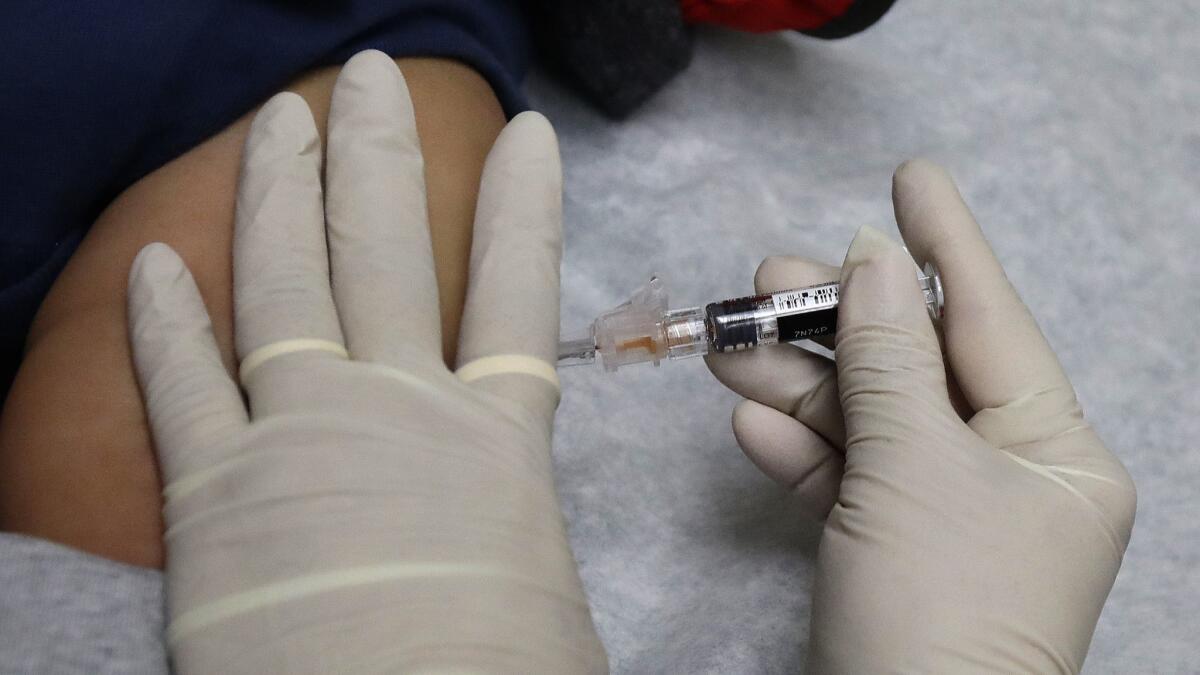More young Californians dying of flu than in years past

- Share via
As flu illnesses began sweeping across the nation in the last few weeks, health officials maintained that this year’s influenza season would most likely be milder than last year’s — but new data show the number of deaths linked to the flu is higher than in previous years.
In the last flu season, so many people fell ill that hospitals overflowed with patients and ran out of medicines. Some experts said the nationwide death toll in the 2017-2018 season — 79,400 — was second only to the 1918 Spanish flu pandemic.
But California officials said Friday that 119 people have died of flu this season. The roughly 60 deaths among people younger than 65 is much higher than in other years, according to state data.
Until this season, health officials did not tally flu deaths among people over 65. But during this time period in each of the last two years, 23 people under age 65 had died of the flu in the state. In 2016, the total was three.
The higher number of deaths could be because the flu season is peaking earlier this year, officials said. The season, which runs from October through May, typically peaks in February.
More likely, the uptick in deaths among younger people is because of the kind of influenza spreading through California.
Roughly 90% of people testing positive for the flu in California have had swine flu, a kind of Influenza A known as H1N1, according to state data. H1N1 tends to be most dangerous for children and younger adults, experts say.
In San Diego County, an otherwise healthy 32-year-old man died of the flu earlier this month, county health officials said this week. He had not been immunized.
An unvaccinated 4-year-old in Riverside County also died from the flu this season.
“Healthy young people should not be dying from influenza,” Dr. Sayone Thihalolipavan, San Diego County’s deputy public health officer, said in a statement. “If you have not gotten a flu shot, do it now.”
In 2014, the last time H1N1 was the predominant flu virus 95 people under age 65 in California had died of the flu by late January. By the end of the season, 342 people had died in the state, including seven children.
Many people first heard of swine flu during a global pandemic that began in 2009 and killed 12,469 people in the United States. The virus, however, is now considered a regular flu virus that can circulate each season.
Officials encourage everyone over 6 months of age to get vaccinated. The vaccine takes about two weeks to take effect. People who receive the shot and still catch the flu typically experience less severe symptoms.
Officials say older adults may not be as susceptible to H1N1 because they have immunity from exposure to the virus during previous flu seasons.
So far this season, 22 children have died of the flu nationwide, according to the U.S. Centers for Disease Control and Prevention. Last year’s flu season killed 185 children nationwide, 80% of whom were not vaccinated, according to the CDC.
Nationwide, between 6 million and 7 million people have caught the flu this season, half of whom have sought medical care for their illness, federal officials say. Between 69,000 and 84,000 people have been hospitalized for the flu so far.
To prevent the spread of the illness, the CDC recommends staying home for 24 hours after a fever ends, covering your nose and mouth with a tissue when you cough or sneeze and washing your hands often.
soumya.karlamangla@latimes.com
Twitter: @skarlamangla
More to Read
Sign up for Essential California
The most important California stories and recommendations in your inbox every morning.
You may occasionally receive promotional content from the Los Angeles Times.













